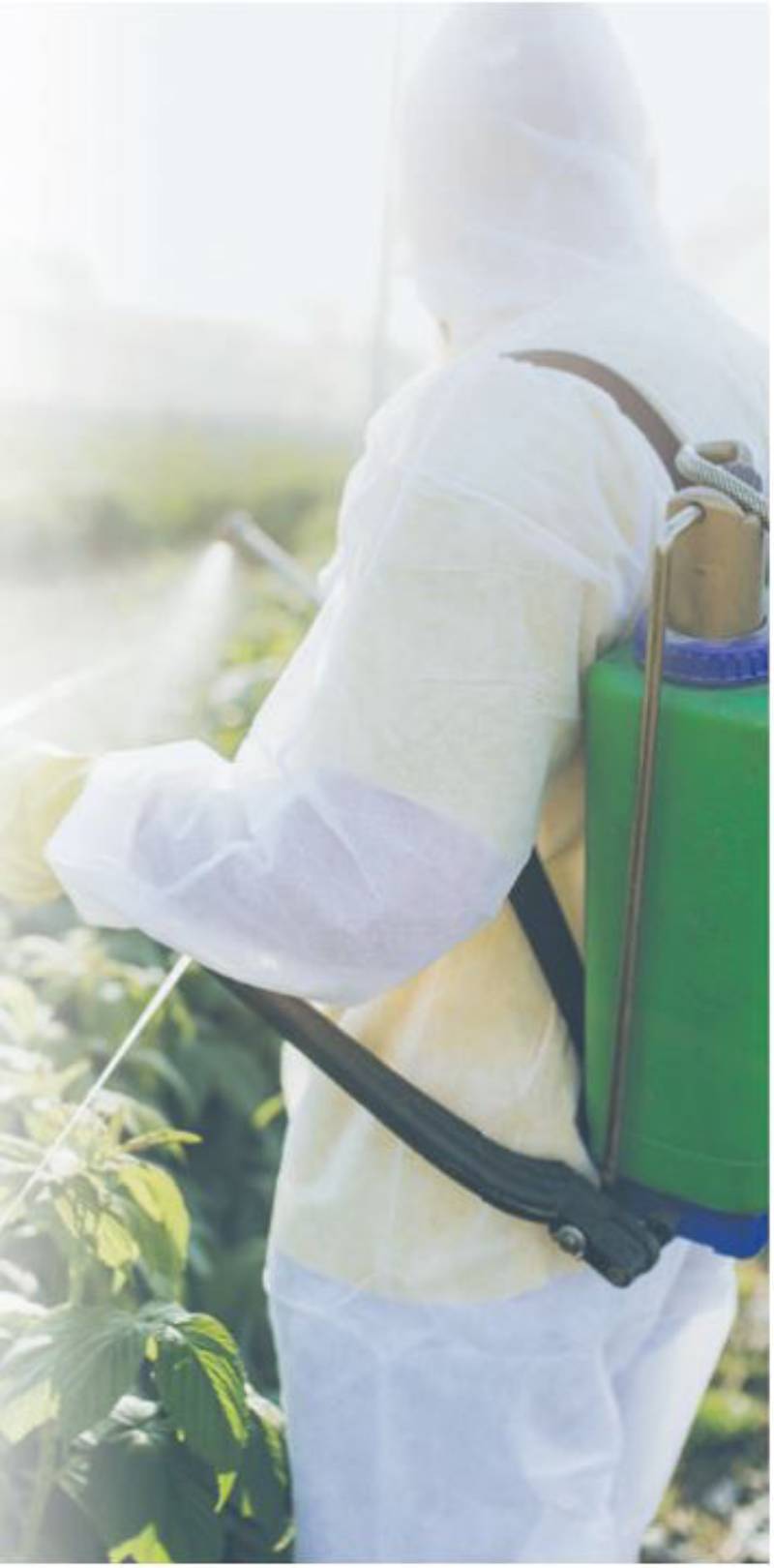Right chemicals to use for your crop

Today there are very many chemicals in the market and I am sure farmers are finding it hard when it comes to the choice of which chemical to use. Plant protection chemicals can be classified into two categories; these are: insecticides /miticides /nematicides and fungicides.
Fungicides: These are disease protectant or curative chemicals which are applied to the crops when a disease has been spotted in case of curatives or those which are applied prophylactically as a control measure.
Curative fungicides are usually systemic and are applied when a specific disease has been spotted or presence of disease causing spores from the neighbors crops or presence of predisposing factor, for example, high humidity may trigger downy mildew to a susceptible crop like onions or capsicum.
So, a decision to use a curative chemical may be made from (a) the presence of the disease e.g. powdery or downy mildew (b) Presence of a diseases in a neighbor’s farm (c) presence of factors which favors the growth or spread of a specific disease e.g. rain or high humidity.
For a disease to attack a plant or develop in a plant, there must be a source of infection i.e. the disease-causing organism or pathogens and conducive weather factors which favors that particular pathogen.
It’s not possible to see the pathogens with naked eyes and that’s why it’s always important to take measure in order to protect your crops by spraying or using protectant fungicides as a regular program (Prophylactic spray program)
Protectants: These are mainly contact fungicides which are used on a regular spray program in order to give the crop a protective cover against the disease. These chemicals are very useful because unlike the curative ones which are mainly single sites, majority of protectants are multi-sites or rather they attack many sites within the pathogen cell.
Due to this aspect, they don’t develop resistant easily like the curatives. Examples of chemicals in this category are Mancozeb (Dithiane, Multithane etc.), coppers (Cupravit, Koxide, etc., Propineb (Antracol), Chlorothalonil (Daconil Twigathaloni,) I am just mentioning a few active ingredients and brand names.
Mancozeb, Chlorothalonil, propineb are good for controlling Downy mildews, blights and rust in vegetables BUT it’s always important to read the label before use.
It is important to note that when using both fungicides and insecticides, it’s advisable to use them in a reasonable manner in order to manage resistance by avoiding the use of one active ingredient repeatedly or tank mixing chemicals with one active ingredient. Also, it’s important to avoid under dosing.
What is an active ingredient? This is a component in a chemical which has the ability to kill a pathogen or an insect and its always expressed as a percentage by weight or volume of the content in a litre per kilogramme. These days, there are several brand names sharing a similar active ingredient and if one is not careful it is possible to buy and spray many brand names with only one active ingredient. For example, dithiane, oshothane, multithane are different trade names having Mancozeb as an active ingredient.
Product label: Everything that a farmer would like to know about a chemical is written on the label. The label has very useful information and farmers should always read the label before using any chemical. The label has the disease which the chemical is used against, dosage rate, pre-harvest interval, volume of water to be used, spray intervals and tank mixing recommendation.
What is the importance of PHI? (Pre-harvest interval or the period which a farmer has to wait before harvesting the crop from the spraying date) Chemicals are poisons i.e. they have the ability to harm human beings if not properly used.
Due to this fact, chemical manufacturers are required by law to state the period by which the chemical residues are at their lowest in a plant from the date of spraying. Some chemicals persist more in a plant or take longer to be broken down within the plant system or on the surface and that’s why different products have different PHIs.
It’s very important that farmers observe the PHI in order to enhance food safety and avoid feeding fellow human with food laced with chemicals.
Want to get latest farming tips and videos?
Join Us
Share this article on social
 The Standard Group Plc is a multi-media organization
with investments in media platforms spanning newspaper print operations,
television, radio broadcasting, digital and online services. The Standard Group
is recognized as a leading multi-media house in Kenya with a key influence in
matters of national and international interest.
The Standard Group Plc is a multi-media organization
with investments in media platforms spanning newspaper print operations,
television, radio broadcasting, digital and online services. The Standard Group
is recognized as a leading multi-media house in Kenya with a key influence in
matters of national and international interest.
 The Standard Group Plc is a multi-media organization
with investments in media platforms spanning newspaper print operations,
television, radio broadcasting, digital and online services. The Standard Group
is recognized as a leading multi-media house in Kenya with a key influence in
matters of national and international interest.
The Standard Group Plc is a multi-media organization
with investments in media platforms spanning newspaper print operations,
television, radio broadcasting, digital and online services. The Standard Group
is recognized as a leading multi-media house in Kenya with a key influence in
matters of national and international interest.







